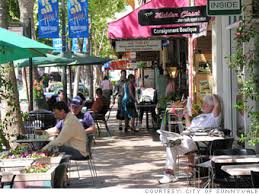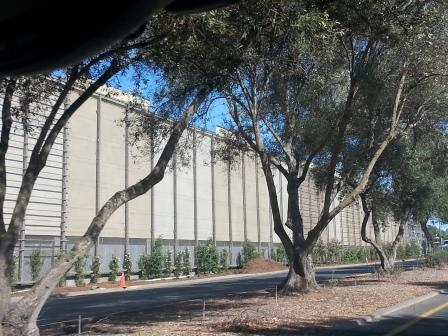 I visited friends in Northern California. Not “Northern California = San Francisco as opposed to Los Angeles” but “Northern California = North of Santa Rosa as opposed to San Francisco” . It was a revelation.
I visited friends in Northern California. Not “Northern California = San Francisco as opposed to Los Angeles” but “Northern California = North of Santa Rosa as opposed to San Francisco” . It was a revelation.
North of Santa Rosa the hills are covered with vineyards or redwood forests, not housing developments.
North of Santa Rosa US 101 winds along the rivers whenever possible, because that is the way one could travel between the forbidding mountains of the coast range and the desert area of the Central Valley (yes, desert before irrigation)
North of Santa Rosa wealth comes from agriculture, whether that be dairy, winery, timber forest, orchard, or illegal pot farm.
North of Santa Rose the largest “city” is Redding, named for a land agent of the Central Pacific railroad when the railroad decided to route its north-south route through the town formerly known as Poverty Flats. Today it is best known for a beautiful pedestrian bridge.
It’s easy to make fun of farming communities. I couldn’t help but giggle at the front page article in the Humboldt Beacon lauding the selection of a local girl as California Beef Ambassador, with the quote that she will “be the face of California beef.” And I broke into a laugh as the article noted that the girl’s great-grandmother had been “Cowbelle of the Year” in Humboldt County some years back, while her mother had been Cattle Woman of the Year in 2005.
Then I thought again. It’s a lucky family that can trace four generations in the same community, and that has carried on a common interest, whether it be agriculture, education, or industry, across the same number of generations. There’s a lot to be said for continuity, a lot to be said for roots.
 I thought more about roots and continuity when I visited the small cemetery in the town. It was nothing like the carefully manicured death theme parks in metro areas, with their restrictions on size, shape and structure of grave markers and memorial tributes. The graves were mostly marked with tombstones, but also with wooden crosses, hand-carved slabs of redwood, or mosaic tile and colored beads set in concrete to spell out the names of the dead. Some family names stretched back to gold rush times when the village was founded.
I thought more about roots and continuity when I visited the small cemetery in the town. It was nothing like the carefully manicured death theme parks in metro areas, with their restrictions on size, shape and structure of grave markers and memorial tributes. The graves were mostly marked with tombstones, but also with wooden crosses, hand-carved slabs of redwood, or mosaic tile and colored beads set in concrete to spell out the names of the dead. Some family names stretched back to gold rush times when the village was founded.
Most, but not all, of the graves were carefully tended. Many were festooned with fresh or artificial flowers. One grave was covered with porcelain figurines ranging from the Madonna to Mickey Mouse, all meticulously clean.
My favorite was the grave of “beloved mother” Ruth Miner. Her simple black marble plaque was carved with her name, birth, and death dates. Just below was a second carved marble plaque announcing “I AM AN ATHEIST ALL DRESSED UP NO PLACE TO GO”.
From her gravesite on the hill planted with blooming rhododendrons, I looked over the village with its church spires and beyond to the verdant valley dotted with grazing cows. I thought to myself “Ruth, where would you want to go from here?”
 I’m talking about Parkersburg, West Virginia. In its heyday, the center of town was a fantasy of Romanesque architecture in red brick or gray stone, each structure striving to reach the heights via a spire (if it was a church) or a clock tower (if it was a civic building), The history book in our hotel showed picture after picture of these wonderful buildings, but most were captioned “… abandoned in the 50’s.” “…gutted by fire of unknown origin after standing empty for some time.” “…razed unceremoniously in the 70’s despite citizen and local historian’s outraged protest.” I noted the locations where these buildings had stood and checked them out. Parking lots, all. And all empty. Only three buildings remained of the many pictured. There is no there there.
I’m talking about Parkersburg, West Virginia. In its heyday, the center of town was a fantasy of Romanesque architecture in red brick or gray stone, each structure striving to reach the heights via a spire (if it was a church) or a clock tower (if it was a civic building), The history book in our hotel showed picture after picture of these wonderful buildings, but most were captioned “… abandoned in the 50’s.” “…gutted by fire of unknown origin after standing empty for some time.” “…razed unceremoniously in the 70’s despite citizen and local historian’s outraged protest.” I noted the locations where these buildings had stood and checked them out. Parking lots, all. And all empty. Only three buildings remained of the many pictured. There is no there there.




